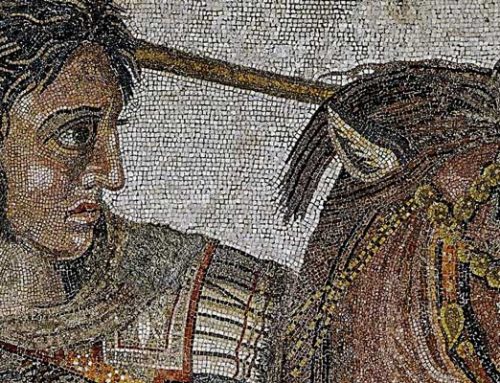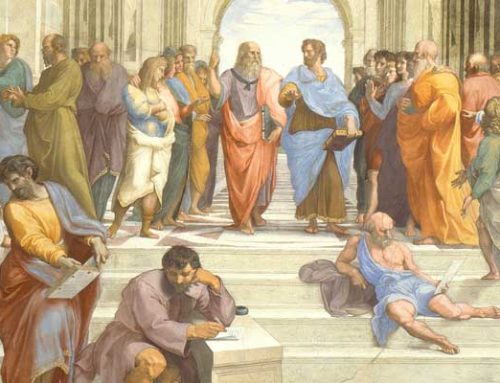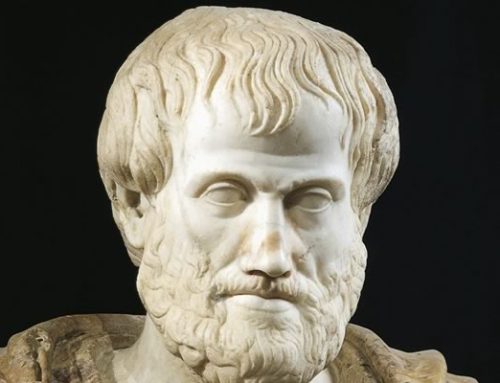Sparta was an ancient Greek polis that was surrounded by enemies. As a result, Spartan citizens began preparing for war at birth. Spartan rulers examined newborn babies to determine if they were healthy and strong enough to be of value to the polis. Sickly or malformed infants deemed incapable of contributing to the security of Sparta were killed.
Spartans had to conform to strict rules. Spartan boys would leave their homes at age seven to begin training as warriors. The boys would live in military housing called barracks, where they faced rigorous training and discipline. Spartan trainers deliberately underfed the boys. Any boy caught stealing food was beaten–not for stealing, but for being caught.
Spartan men could marry when they were twenty years old, but could not live with their families until they reached thirty. A Spartan soldier who had not found a wife by age thirty would customarily capture an unmarried woman of his choice. Men served in the Spartan military until they were sixty years old.
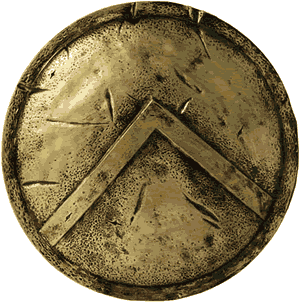
Spartan_shield
The soldier was expected to return to Sparta either victorious with his shield in hand, or be carried home dead upon his shield..
Both men and women in Sparta competed in athletic contests to keep physically fit.
With men constantly in training for war, Spartan women completed many of the duties of running the polis. Women were the sole owners of at least one-third of Spartan land. Spartan girls were raised to eventually bear strong children for the polis.
The people of other poli would tell the story of a Spartan mother who killed her son for running away from his duties. Whether or not the story was true, Spartan women were known for being stoic. A stoic person can endure pain or hardship without showing their feelings or complaining. When Spartan soldiers went to battle, their mothers and wives would present the warriors with their shield and say: “With this, or upon this.” The soldier was expected to return to Sparta either victorious with his shield in hand, or be carried home dead upon his shield. Returning alive and without his shield could mean banishment from the polis or death.
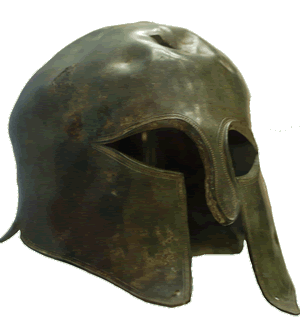
Spartan_helmet
Spartan soldiers were outfitted in bronze helmets that covered the face and neck. This helmet is on display at the British Museum. The damage at the top of the helmet was probably sustained in an ancient battle.
The Spartan rulers were Dorians, a Greek-speaking ethnic group that invaded Sparta sometime before the end of the Greek Dark Age. Spartan warriors expanded their territory on the Peloponnesus by capturing neighboring lands. The Peloponnesus is a peninsula in southern Greece.
The Spartans called the people they captured helots. They forced the helots to farm the land they once owned. Worse, the helots had to provide half of their harvest to Sparta. A Spartan police force spied on the helots and killed anyone suspected of being a threat. Every year, Sparta would declare war on the helots, and Spartan warriors would kill helots as part of their training.
Spartan laws discouraged anything that would distract citizens from their disciplined military life. Sparta did not welcome visitors from other cities, and did not allow their citizens to travel. The Spartans were not interested in other ways of life and did not want to bring new ideas to their polis. Today, we use spartan as an adjective to describe someone who leads a rigorously disciplined life that includes few comforts or luxuries.
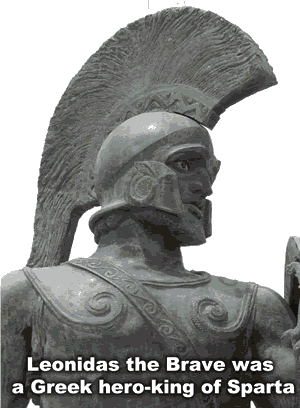
Leonidas-Sparta
Sparta’s army eventually came into conflict with Athens, a trading poli that developed the strongest navy of ancient Greece. In 431bce, Sparta and Athens began a twenty-seven year long conflict called the Peloponnesian War. The Romans conquered Sparta in 146bce, ending centuries of independence for the polis. In 1834, Greece began construction of a new city on the site of ancient Sparta. Modern Sparti is a small city with fewer than 20,000 inhabitants that lives on among the ruins of one of the most powerful cities in history.
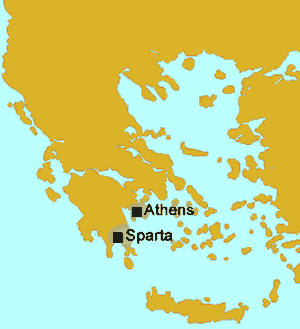
Sparta_Athens_map
Resources
Download this lesson as Microsoft Word file or as an Adobe Acrobat file.
View a Powerpoint presentation of this lesson.
Listen as Mr. Dowling reads this lesson.
Lexile Measure 1100L
Mean Sentence Length 16.61
Mean Log Word Frequency 3.39
Word Count 598
Mr. Donn has an excellent website that includes a section on Ancient Greece.
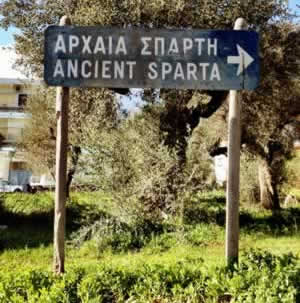
Moden_Sparta_sign
Greece began contruction of a new city on the site of ancient Sparta. Modern Sparti is a small city with fewer than 20,000 inhabitants


